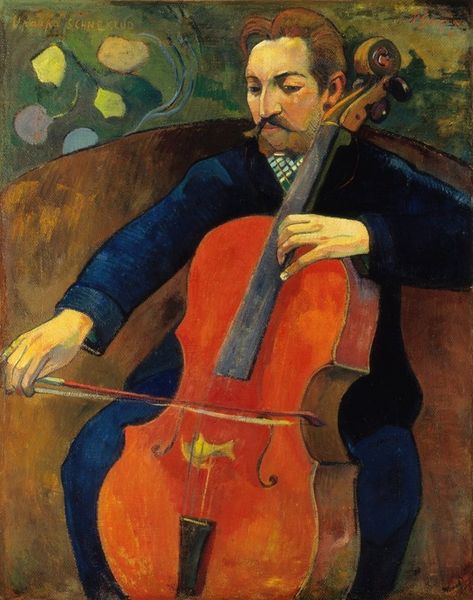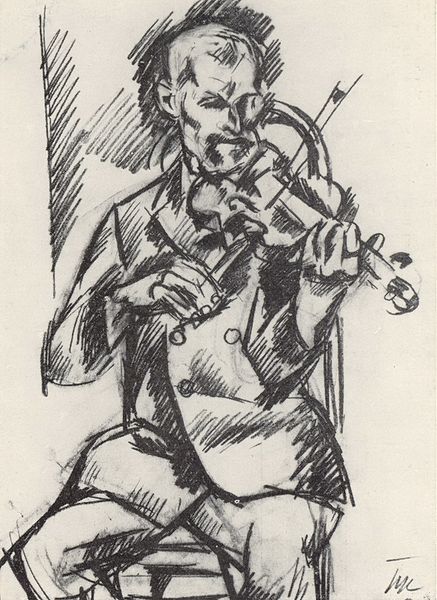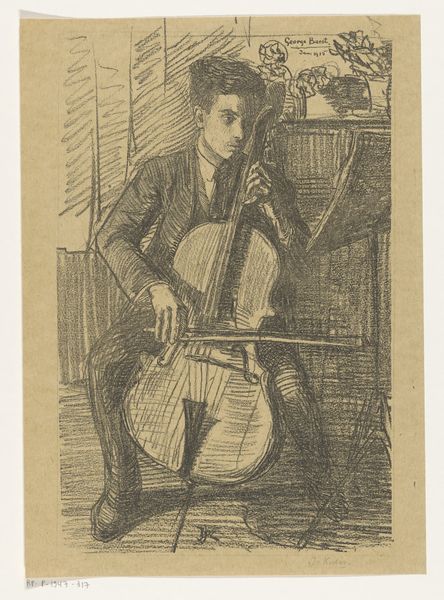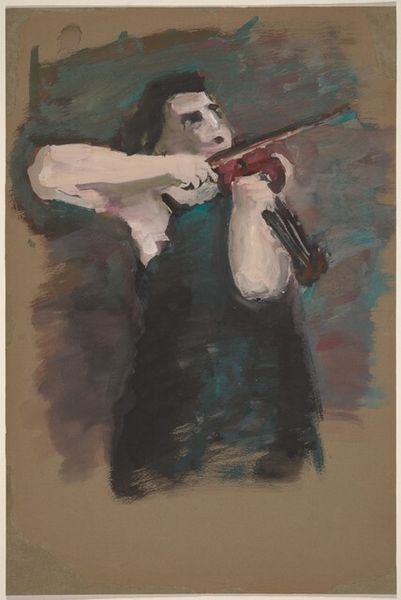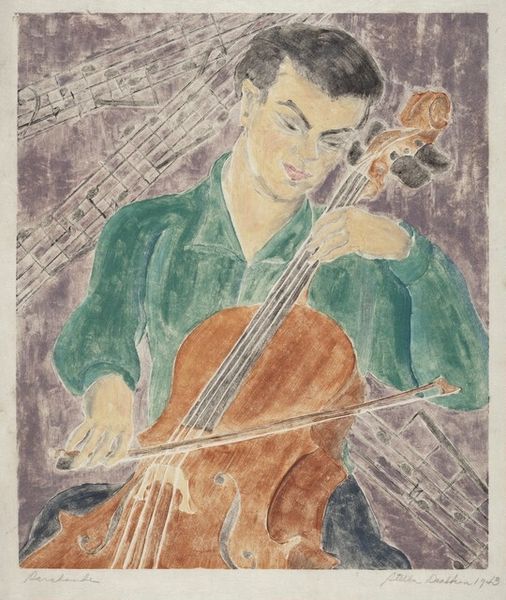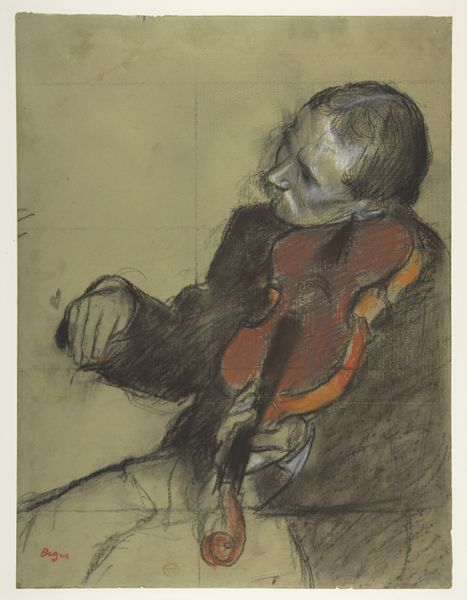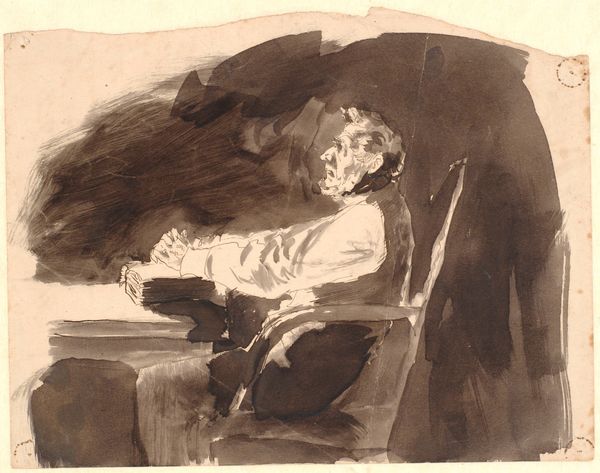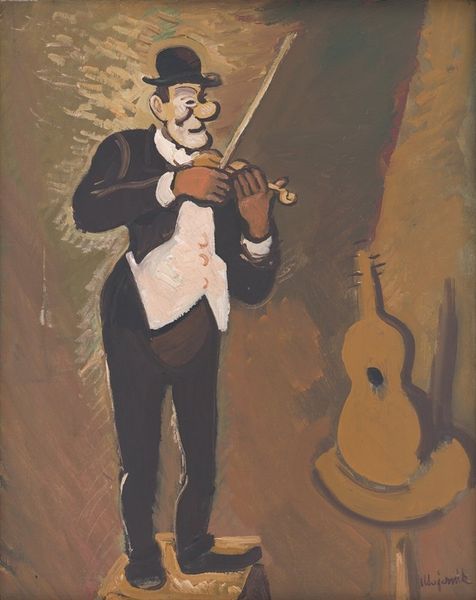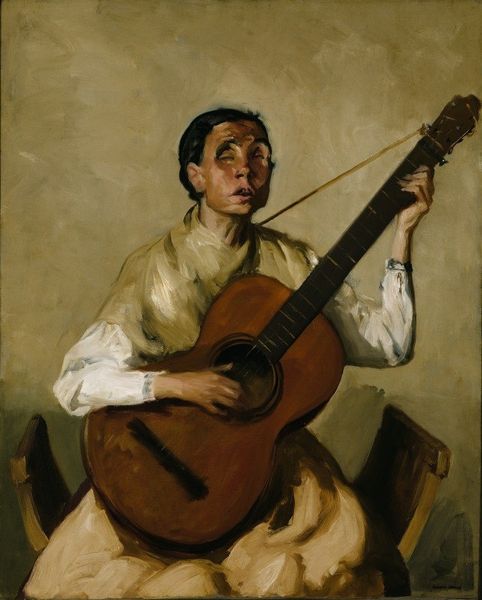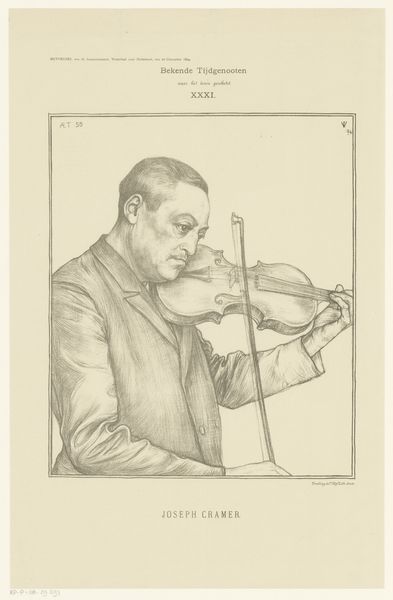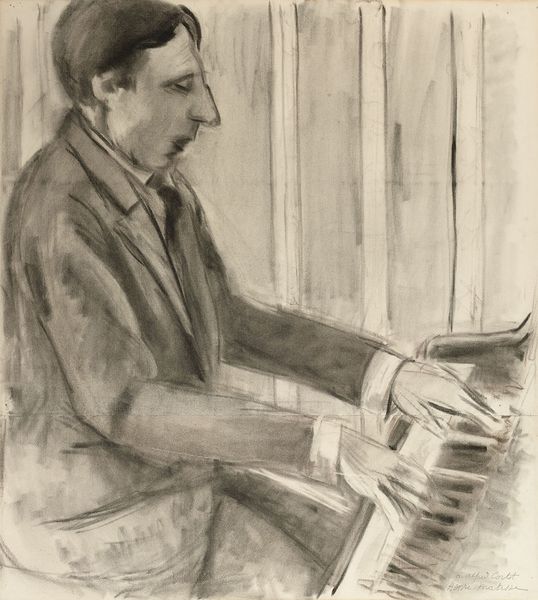
painting, watercolor
#
portrait
#
figurative
#
painting
#
charcoal drawing
#
figuration
#
oil painting
#
watercolor
#
portrait art
#
watercolor
Copyright: Public Domain: Artvee
Curator: Up next is Cyprián Majerník’s "Bullock," created in 1936. It is painted using watercolors and is also recognized as a charcoal drawing and oil painting portrait, which is rather striking to look at. Editor: It's quite striking indeed, though somewhat subdued in its color palette. The brushwork feels hurried, capturing a momentary pose. It projects a kind of melancholy; the musician seems utterly absorbed, almost lost in his playing. Curator: The subject’s working-class appearance challenges traditional portraiture's focus on the elite. The violinist here doesn’t present himself, the material object of the violin is more important to express what this man might feel through art. Majerník, especially at this time, was influenced by the grim economic conditions which likely affected his artistic choices and subject matter. Editor: Precisely. We must consider not just the artist’s intention, but also the social function of the piece, for the lower class and for social commentary. Curator: Considering that art production is also a form of labor. Majerník’s choice of less precious media such as charcoal drawing also suggests making art during less than ideal studio conditions. Editor: Right, you notice that even the material support—likely paper—looks rather raw, almost unfinished. It all comes together, pointing to constraints and the available. How materials impact content. Curator: And how the economic situation of that time deeply impact the means and subject of production for artists and craftspeople. But on another level, even considering portraiture norms, depicting ordinary folks offered them visibility and acknowledgement in art and visual culture. Editor: Certainly, that challenges the existing visual hierarchies by providing an image to rally under. It is not just the aesthetic depiction, but a document that opens paths for future interpretations and discussions about societal values. Curator: Yes, that helps provide some understanding to his intent of subject choice and representation of the person through the art made available during those years of creating art in grim economic times. Editor: Ultimately, I'd suggest the focus be placed on this relationship of production: artist/material, sitter/social circumstances, and painting/society, to comprehend "Bullock."
Comments
No comments
Be the first to comment and join the conversation on the ultimate creative platform.
